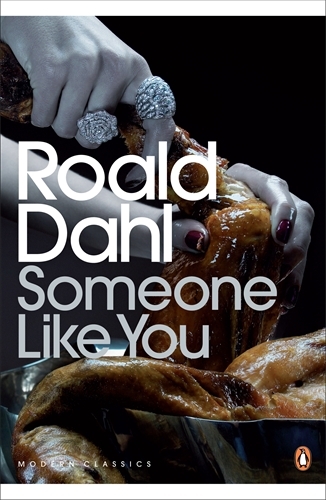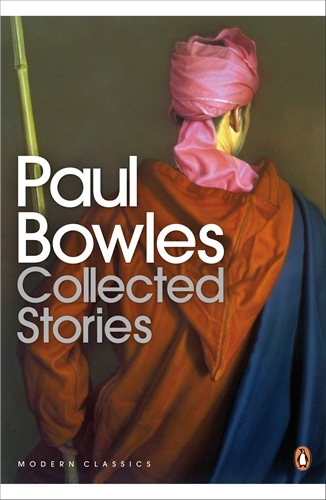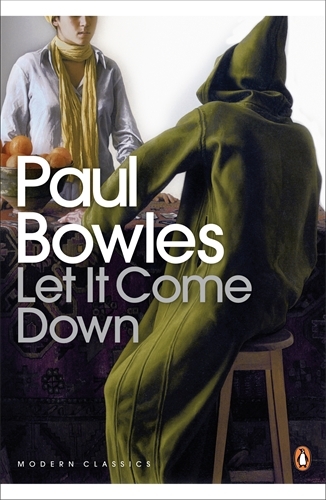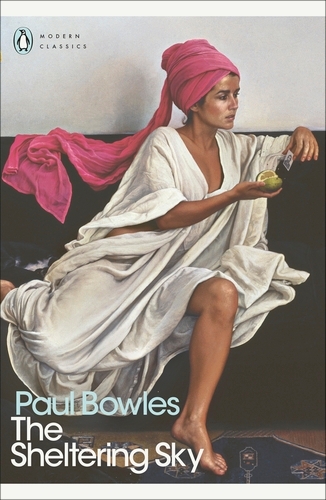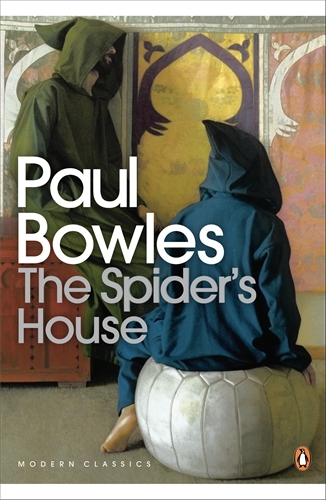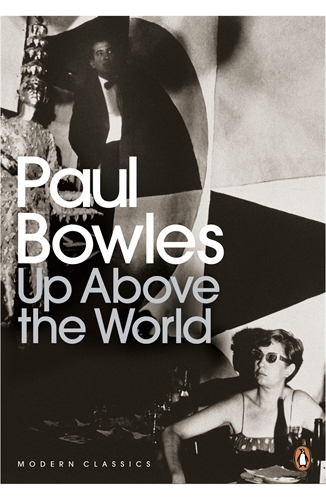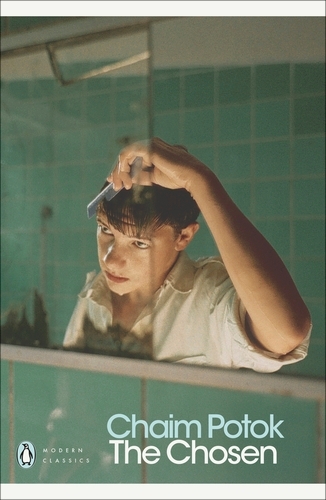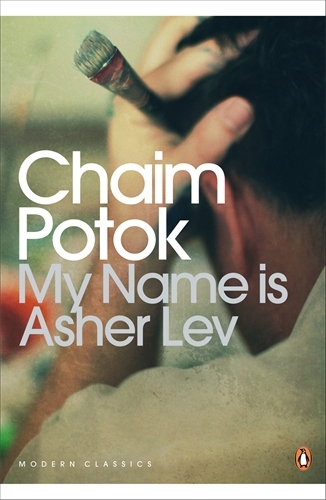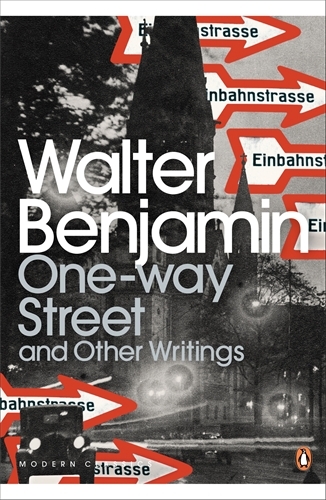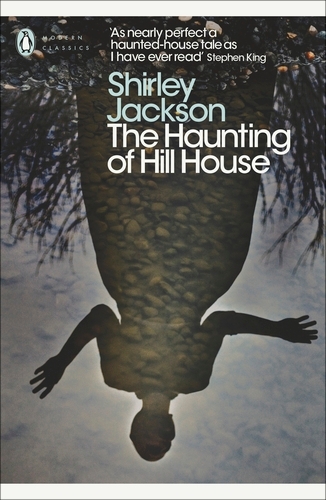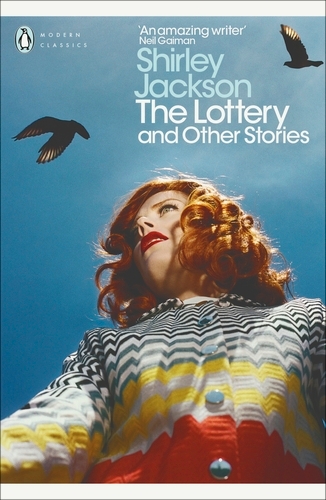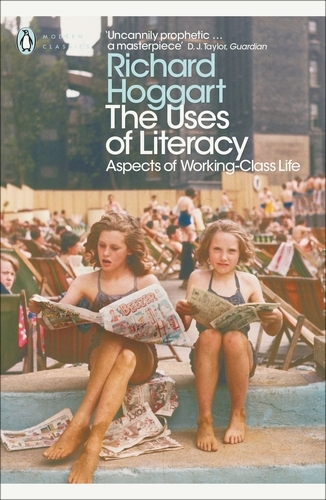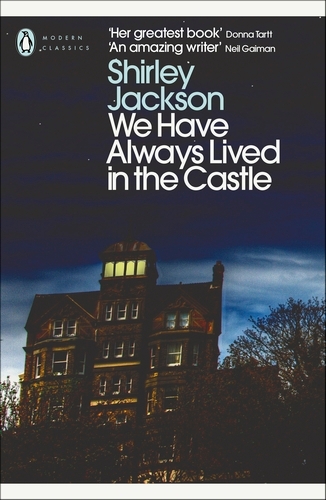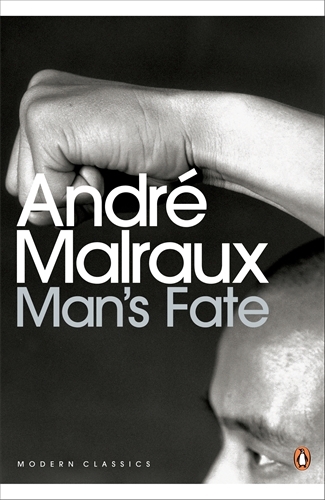Penguin Modern Classics
1279 books in this series
Someone Like You
These eighteen tales of the macabre show Dahl's dark brilliance as a short-story writer. They are wicked (as an old man attracts the attentions of those more interested in his skin than his wellbeing), shocking (as distasteful bets are made - a daughter's hand on the identity of a glass of claret, a finger risked for a Cadillac) and blackly humorous (as a cuckolded husband receives a chance to take his revenge out on his wife's neck). Someone Like You is as devilishly ingenious and suspenseful as writing gets.
Collected Stories
In these hauntingly beautiful stories of abandonment and vengeance, extreme situations lead to disturbing conclusions. A missionary is sent to a place so distant he finds his God has no power there; a husband abandons his wife as they honeymoon in the South American jungle; a splash of water triggers an explosion of violence; and a boy's drug-induced transformation leads to cruelty enjoyed and suffered.
Masterfully written, these are chilling tales from sun-drenched and brutal climes.
Masterfully written, these are chilling tales from sun-drenched and brutal climes.
Let It Come Down
Let It Come Down, with its title from Macbeth, tells the story of Dyar, a New York bank clerk who throws up his secure, humdrum job to find a reality abroad with which to identify himself, and his macabre experiences in the inferno of Tangiers as he gives in to his darkest impulses. Rich in descriptions of the corruption and decadence of the International Zone in the last days before Moroccan independence, Bowles's second novel is an alternately comic and horrific account of a descent into nihilism.
The Sheltering Sky
'The Sheltering Sky is a book about people on the edge of an alien space; somewhere where, curiously, they are never alone' Michael Hoffman.
Port and Kit Moresbury, a sophisticated American couple, are finding it more than a little difficult to live with each other. Endeavouring to escape this predicament, they set off for North Africa intending to travel through Algeria - uncertain of exactly where they are heading, but determined to leave the modern world behind. The results of this casually taken decision are both tragic and compelling.
Port and Kit Moresbury, a sophisticated American couple, are finding it more than a little difficult to live with each other. Endeavouring to escape this predicament, they set off for North Africa intending to travel through Algeria - uncertain of exactly where they are heading, but determined to leave the modern world behind. The results of this casually taken decision are both tragic and compelling.
The Spider's House
Fez, 1954, and American ex-pat Stenham reluctantly accepts a guide for his night-time walk home through the streets of the Medina. A nationalist uprising is transforming the country, much to the annoyance of Stenham, who enjoys the trappings of the old city. His path soon crosses with the young, illiterate son of a healer, another outsider to the newly politicised life of Morocco, in this brutally honest novel of life in the midst of terrorism, violence and the ugly opportunism that accompanies both.
Bowles's most masterly novel combines his classic themes: the conflict of Eastern and Western cultures and the trials of otherness.
Bowles's most masterly novel combines his classic themes: the conflict of Eastern and Western cultures and the trials of otherness.
Up Above the World
A chance encounter while holidaying in Central America leads an American couple, the Slades, to befriend the charming, handsome Grove Soto and his young Cuban mistress. But as the Slades' trip becomes prolonged and they grow increasingly dependent on their new acquaintances, an undercurrent of cruelty begins to disturb the comfort and niceties to which they are accustomed. Up Above the World shows Paul Bowles to be a master of the tension and horror of rising viciousness.
The Chosen
Following a baseball game that nearly became a religious war, two Jewish boys become friends. Danny comes from the strict Hasidic sect that keeps him bound in centuries of orthodoxy. Reuven is brought up by a father patently aware of the twentieth century. Everything tries to destroy their friendship, but they use honesty with each other as a shield and it proves an impenetrable protection.
My Name is Asher Lev
Asher Lev is a gifted loner, the artist who painted the sensational Brooklyn Crucifixion. Into it he poured all the anguish and torment a Jew can feel when torn between the faith of his fathers and the calling of his art. Here Asher Lev plunges back into his childhood and recounts the story of love and conflict which dragged him to this crossroads.
One-Way Street and Other Writings
Walter Benjamin - philosopher, essayist, literary and cultural theorist - was one of the most original writers and thinkers of the twentieth century. This new selection brings together Benjamin's major works, including 'One-Way Street', his dreamlike, aphoristic observations of urban life in Weimar Germany; 'Unpacking My Library', a delightful meditation on book-collecting; the confessional 'Hashish in Marseille'; and 'The Work of Art in the Age of Mechanical Reproduction', his seminal essay on how technology changes the way we appreciate art. Also including writings on subjects ranging from Proust to Kafka, violence to surrealism, this is the essential volume on one of the most prescient critical voices of the modern age.
Contains: 'Unpacking My Library'; 'One-Way Street'; 'The Work of Art in the Age of Mechanical Reproduction'; 'Brief History of Photography'; 'Hashish in Marseille'; 'On the Critique of Violence'; 'The Job of the Translator'; 'Surrealism'; 'Franz Kafka' and 'Picturing Proust'.
Contains: 'Unpacking My Library'; 'One-Way Street'; 'The Work of Art in the Age of Mechanical Reproduction'; 'Brief History of Photography'; 'Hashish in Marseille'; 'On the Critique of Violence'; 'The Job of the Translator'; 'Surrealism'; 'Franz Kafka' and 'Picturing Proust'.
The Haunting of Hill House
The best-known of Shirley Jackson's novels and a major inspiration for writers like Stephen King as well as the hit Netflix series, The Haunting of Hill House is a chilling story of the power of fear
'Shirley Jackson's stories are among the most terrifying ever written' Donna Tartt
Alone in the world, Eleanor is delighted to take up Dr Montague's invitation to spend a summer in the mysterious Hill House. Joining them are Theodora, an artistic 'sensitive', and Luke, heir to the house. But what begins as a light-hearted experiment is swiftly proven to be a trip into their darkest nightmares, and an investigation that one of their number may not survive. Twice filmed as The Haunting, and the inspiration for a 10-part Netflix series, The Haunting of Hill House is a powerful work of slow-burning psychological horror.
'An amazing writer ... If you haven't read her you have missed out on something marvellous' Neil Gaiman
'As nearly perfect a haunted-house tale as I have ever read' Stephen King
'The world of Shirley Jackson is eerie and unforgettable' A. M. Homes
'Shirley Jackson is one of those highly idiosyncratic, inimitable writers...whose work exerts an enduring spell' Joyce Carol Oates
'Shirley Jackson's stories are among the most terrifying ever written' Donna Tartt
Alone in the world, Eleanor is delighted to take up Dr Montague's invitation to spend a summer in the mysterious Hill House. Joining them are Theodora, an artistic 'sensitive', and Luke, heir to the house. But what begins as a light-hearted experiment is swiftly proven to be a trip into their darkest nightmares, and an investigation that one of their number may not survive. Twice filmed as The Haunting, and the inspiration for a 10-part Netflix series, The Haunting of Hill House is a powerful work of slow-burning psychological horror.
'An amazing writer ... If you haven't read her you have missed out on something marvellous' Neil Gaiman
'As nearly perfect a haunted-house tale as I have ever read' Stephen King
'The world of Shirley Jackson is eerie and unforgettable' A. M. Homes
'Shirley Jackson is one of those highly idiosyncratic, inimitable writers...whose work exerts an enduring spell' Joyce Carol Oates
The Lottery and Other Stories
'Shirley Jackson's stories are among the most terrifying ever written' Donna Tartt
This is the definitive collection of Shirley Jackson's short stories, including 'The Lottery' - one of the most terrifying and iconic stories of the twentieth century, and an influence on writers such as Stephen King.
In these stories an excellent host finds himself turned out of home by his own guests; a woman spends her wedding day frantically searching for her husband-to-be; and in Shirley Jackson's best-known story, a small farming village comes together for a terrible annual ritual. The creeping unease of lives squandered and the bloody glee of lives lost is chillingly captured in these tales of wasted potential and casual cruelty by a master of the short story.
Shirley Jackson's chilling tales have the power to unsettle and terrify unlike any other. She was born in California in 1916. When her short story The Lottery was first published in The New Yorker in 1948, readers were so horrified they sent her hate mail; it has since become one of the greatest American stories of all time. Her first novel, The Road Through the Wall, was published in the same year and was followed by five more: Hangsaman, The Bird's Nest, The Sundial, The Haunting of Hill House and We Have Always Lived in the Castle, widely seen as her masterpiece. Shirley Jackson died in her sleep at the age of 48.
'Her stories are stunning, timeless - as relevant and terrifying now as when they were first published ... 'The Lottery' is so much an icon in the history of the American short story that one could argue it has moved from the canon of American twentieth-century fiction directly into the American psyche, our collective unconscious' A. M. Homes
This is the definitive collection of Shirley Jackson's short stories, including 'The Lottery' - one of the most terrifying and iconic stories of the twentieth century, and an influence on writers such as Stephen King.
In these stories an excellent host finds himself turned out of home by his own guests; a woman spends her wedding day frantically searching for her husband-to-be; and in Shirley Jackson's best-known story, a small farming village comes together for a terrible annual ritual. The creeping unease of lives squandered and the bloody glee of lives lost is chillingly captured in these tales of wasted potential and casual cruelty by a master of the short story.
Shirley Jackson's chilling tales have the power to unsettle and terrify unlike any other. She was born in California in 1916. When her short story The Lottery was first published in The New Yorker in 1948, readers were so horrified they sent her hate mail; it has since become one of the greatest American stories of all time. Her first novel, The Road Through the Wall, was published in the same year and was followed by five more: Hangsaman, The Bird's Nest, The Sundial, The Haunting of Hill House and We Have Always Lived in the Castle, widely seen as her masterpiece. Shirley Jackson died in her sleep at the age of 48.
'Her stories are stunning, timeless - as relevant and terrifying now as when they were first published ... 'The Lottery' is so much an icon in the history of the American short story that one could argue it has moved from the canon of American twentieth-century fiction directly into the American psyche, our collective unconscious' A. M. Homes
The Uses of Literacy
When a society becomes more affluent, does it lose other values? Are the skills that education and literacy gave millions wasted on consuming pop culture? Do the media coerce us into a world of the superficial and the material - or can they be a force for good?
When Richard Hoggart asked these questions in his 1957 book The Uses of Literacy Britain was undergoing huge social change, yet his landmark work has lost none of its pertinence and power today. Hoggart gives a fascinating insight into the close-knit values of Northern England's vanishing working-class communities, and weaves this together with his views on the arrival of a new, homogenous 'mass' US-influenced culture. His headline-grabbing bestseller opened up a whole new area of cultural study and remains essential reading, both as a historical document, and as a commentary on class, poverty and the media.
When Richard Hoggart asked these questions in his 1957 book The Uses of Literacy Britain was undergoing huge social change, yet his landmark work has lost none of its pertinence and power today. Hoggart gives a fascinating insight into the close-knit values of Northern England's vanishing working-class communities, and weaves this together with his views on the arrival of a new, homogenous 'mass' US-influenced culture. His headline-grabbing bestseller opened up a whole new area of cultural study and remains essential reading, both as a historical document, and as a commentary on class, poverty and the media.
We Have Always Lived in the Castle
Living in the Blackwood family home with only her sister Constance and her Uncle Julian for company, Merricat just wants to preserve their delicate way of life. But ever since Constance was acquitted of murdering the rest of the family, the world isn't leaving the Blackwoods alone. And when Cousin Charles arrives, armed with overtures of friendship and a desperate need to get into the safe, Merricat must do everything in her power to protect the remaining family.
In her final novel, Shirley Jackson displays a mastery of suspense, family relationships and black comedy.
In her final novel, Shirley Jackson displays a mastery of suspense, family relationships and black comedy.
Man's Fate
Shanghai, 1927, and revolution is in the air. As the city becomes caught up in violence and bloodshed, four people's lives are altered inexorably: idealist and intellectual Kyo Gisors, one of the leaders of the Communist insurrection, who is also trying to deal with his own marital strife; Ch'en Ta Erh, an assassin and terrorist brutalized by killing; Baron de Clappique, a French gambler, opium dealer and gun runner; and Russian revolutionary Katov, who calmly watches events unfold, until he has to make the ultimate sacrifice. Each of these men must try to resolve their personal conflicts amid political turmoil, conspiracy and betrayal.
Man's Fate, first published in 1933 and now reissued as a Penguin Modern Classic, is a gripping story of conflict, free will and our power to shape our destiny.
Man's Fate, first published in 1933 and now reissued as a Penguin Modern Classic, is a gripping story of conflict, free will and our power to shape our destiny.
Suddenly Last Summer and Other Plays
These three dramatic works by Tennessee Williams explore the darker side of human nature and are haunted by a sense of isolation and regret. 'Suddenly Last Summer' is the starkly told story of Catherine, who seemingly goes insane after her cousin Sebastian dies in grisly circumstances on a trip to Europe. 'The Milk Train Doesn't Stop Here Anymore' is a passionate examination of a wealthy old woman as she recounts her memories in the face of death, while in 'Small Craft Warnings' a motley group of people - including a blowsy beautician, a discredited alcoholic doctor, a vulnerable waif and two gay men - sit around a seedy bar on the Californian coast, each contemplating their own desperate fate.
Sweet Bird of Youth and Other Plays
Loneliness, sexual tension and the need for human kindness pervade these three plays by Tennessee Williams, as their characters rage against personal demons and the modern world. In 'Sweet Bird of Youth', a drifter, Chance Wayne, returns to his home town with an ageing movie actress in search of the girl he loved in his youth, but with terrible, violent results. 'Period of Adjustment' tells the story of two young newlyweds who visit the husband's old army friend on Christmas Eve after unsuccessfully consummating their marriage, and unleash forbidden passion, while in 'The Night of the Iguana' a diverse group of people, including a disturbed ex-minister and a troubled spinster, are thrown together in an isolated Mexican hotel for one eventful night.
